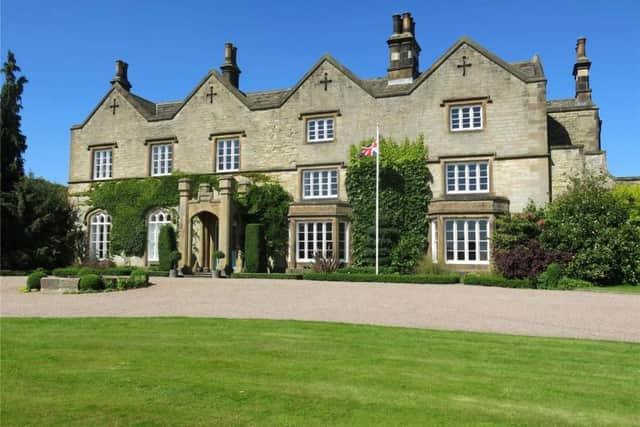Investigations needed before work on listed Chesterfield mansion and Derbyshire wedding venue
and live on Freeview channel 276
The owner of Dunston Hall, which has origins in the 17th Century and is Grade II listed, already has the green light to transform the property in order to host weddings and be used as a holiday-let.
Now detailed plans for how a Grade II listed outbuilding on the site can be transformed to serve as a wedding function room have been submitted to Chesterfield Borough Council.
Advertisement
Hide AdAdvertisement
Hide AdChesterfield and District Civic Society says planning permission should be granted, but some of the outbuildings should be reclassified as a scheduled monument because of their ‘exceptional importance’.


Society chairman Philip Riden said: “Before any building work begins, the applicant should be required to commission and pay for a detailed survey of all three surviving buildings, undertaken by a suitably qualified and experienced buildings archaeologist.
"The survey would include much more detailed drawings than those prepared for the planning application, and the budget should include the cost of publishing a report on the
findings in the Derbyshire Archaeological Journal.
"The applicant should also be required to commission and pay for dendrochronology dating of sample beams from each of the three buildings.”
Advertisement
Hide AdAdvertisement
Hide AdPrevious applications to alter Dunston Hall have faced criticism from the civic society amid claims the owner had breached planning laws.
Mr Riden says dendrochronology, a dating technique used to determine the age of wood, would confirm whether it is Medieval or more recent.
"Dunston Hall and the two ranges of outbuildings were listed in 1977, when much less was known about historic farm buildings, and the use of cruck framing north of the Trent, than is the case today.
"Fifty years ago any cruck truss tended to be regarded as ‘medieval’, whereas it is now accepted that this method of construction continued in the East Midlands, especially for non-residential buildings, until after 1600.
Advertisement
Hide AdAdvertisement
Hide Ad“As far as we know, none of the timbers at Dunston Hall have been dated in this way and we consider it essential that this should be done.”
Mr Riden added: "We also recommend that Chesterfield Borough Council press Historic England to inspect the buildings with a view to increasing their level of protection to scheduled monument status.”